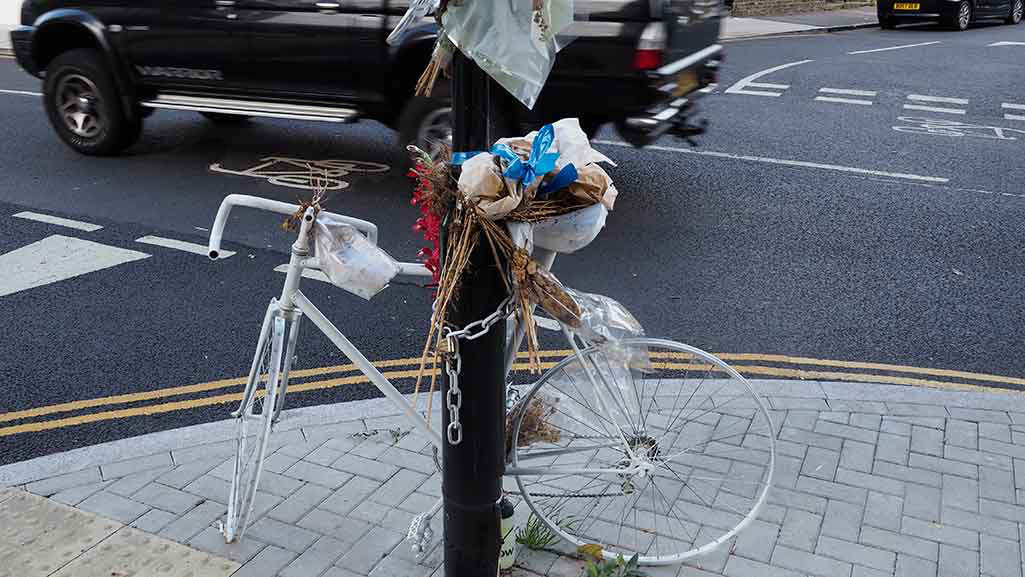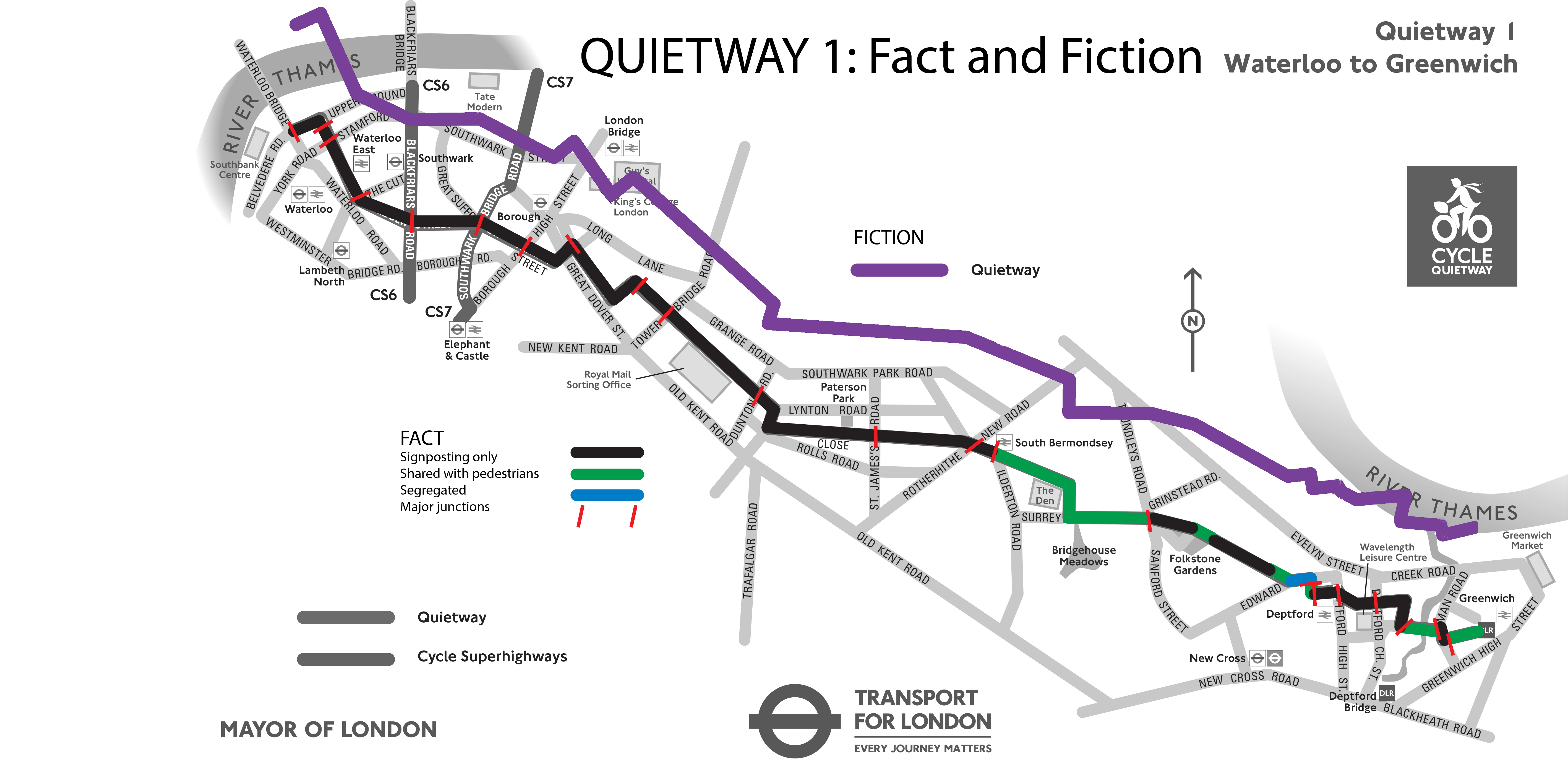Death on the TfL London Cycle Network in 2018


The London Cycle Network LCN is dead but unburied
London cycling commissioner Will Norman declares in the video that ‘Cycling is very safe in London.’ But there are twice as many serious accidents per mile cycled as in Amsterdam and Copenhagen. Imagine if breast cancer survival rates were three times as bad in London. Would Norman tell us that getting your treatment in London was safe?
The London Cycle Network LCN was marked with white bikes on the road to ‘direct and assist cyclists’. Work on the LCN ended c2010 but the signs have not been removed and the ‘assistance’ it provides to cyclists is in directing them to an early grave. In 2018, so far, half the cyclist deaths in London have been on designated LCN routes:
- Oliver Speke died on the A206 Romney Road on LCN18, May
- Edgaras Cepura, A206 by the Woolwich Road roundabout May 18 on LCN18 and LCN64
- Antonio Marchesini, Jun 2018 Childers Street, on World Bicycle Day on LCN2,now Q1
- Shane Murtagh Hammond, July at Battersea Queens Circus on Cycle Superhighway 8 and LCN5
- Dr Peter Fisher High Holborn at the junction with Newton Street August 2018 Cycle to Work Day Quietway 1 and LCN 39
- Peter Harris Bestwood Street and Evelyn Street September 2018 on the ‘secret’ LCN183
London has 9,215 miles of road and the London Cycle Network was about 2500 km = 1,553 miles 16% = 3 times (3×16=48%) as likely to be killed on the LCN as on an average London road – so nine times as likely as on a Dutch cycleway. [or LCN+ 900km =559 miles OR 6%]
I suppose the law protects engineers from doing anything wrong but if I were a barrister and my cyclist/partner was killed on the LCN, I’d sue them. I was delighted when the white bikes appeared on London roads in the 1970s but if I was the boss of TfL I would either re-classify them as ‘meaningless road decorations’ or take a blow torch to them. [Good to do an eBook on London cycle planning with video links).
Quietways
TfL definition: ‘Quietways are continuous and convenient cycle routes on less-busy backstreets across London’.
Criticism: (1) London’s entire 9,215 mile network of roads is ‘continuous’ (2) the first generation of Quietways is not convenient for commuters, because it is an indirect route on backstreets, and it is not convenient for leisure use, because so much of the length (shown in black) is merely an exercise in road marking. It lacks safety and it lacks scenic quality. Your children would need to be in their mid-teens before you let them cycle here.
Suggested criteria: the blue and green sections on the above map are suitable for children and for leisure use. The black sections are semi-quiet roads suitable for local access to shops, colleges, stations etc and for connecting to long-distance commuter cycleways. WHY not map busy roads instead of quiet roads? Or, if so few changes are being made, why not map all quiet roads?
Leisure cycleways should be (1) safe for children (2) medium to high landscape quality
